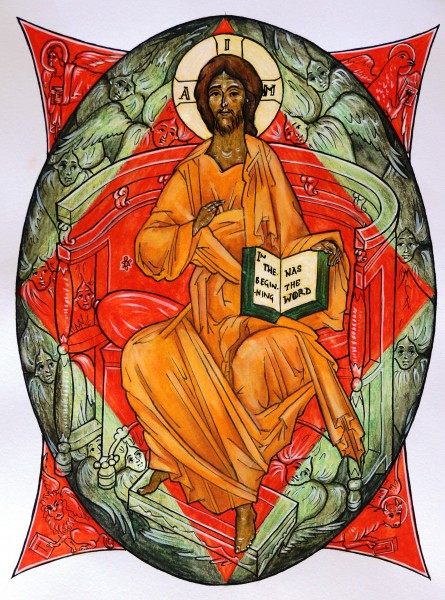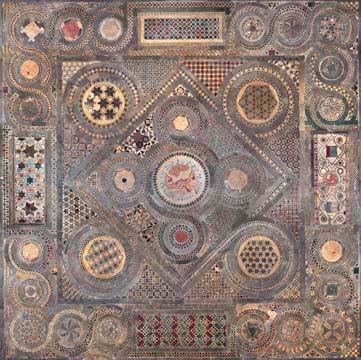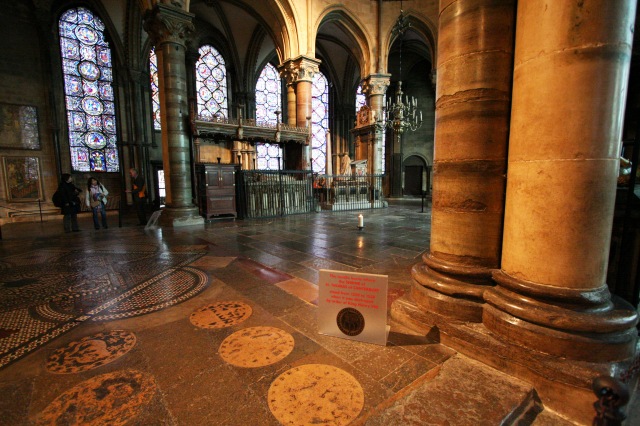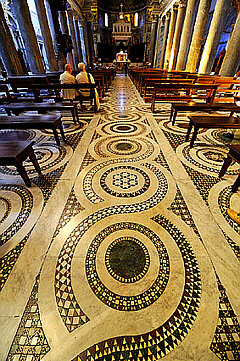To learn more about these classes, go to her website, magdalenaganestam.com, or to her Instagram page, @magdalenaganestam.
The Mathematics of Beauty - Teaching Principles for Today, and Work Submitted by a Student
Images from the Way of Beauty: Christ Enthroned and the Quincunx - Symbolic Images of the Gospels
 This week we show images, one is representational are and one is geometric art.
First is Christ Enthroned. I painted this for the childrens coloring book, Meet the Angels. It went on the back cover. It shows Christ, as described in the vision of Ezekiel and the Book of Revelaton, enthroned with the four faces of the Cherubim in each corner. Around the throne also are many six-winged seraphim - just wings and faces - and who are transparent so the colours of the background show through. This is a standard iconographic image and if you look on Google images for 'Christ Enthroned' or 'Christ in Majesty' you will see many in this style. It is painted in egg tempera. The almond shape around Christ is called a Mandorla (Italian for almond!) and represents the cosmos.
This week we show images, one is representational are and one is geometric art.
First is Christ Enthroned. I painted this for the childrens coloring book, Meet the Angels. It went on the back cover. It shows Christ, as described in the vision of Ezekiel and the Book of Revelaton, enthroned with the four faces of the Cherubim in each corner. Around the throne also are many six-winged seraphim - just wings and faces - and who are transparent so the colours of the background show through. This is a standard iconographic image and if you look on Google images for 'Christ Enthroned' or 'Christ in Majesty' you will see many in this style. It is painted in egg tempera. The almond shape around Christ is called a Mandorla (Italian for almond!) and represents the cosmos.
The other images are examples of cut stone floorwork and are geometric designs in the 'Cosmatesque' or 'Cosmati' style. It is named after the Cosmati family which, over several generations, developed this distinctive style of work. If they were covering a large area, such as a whole church floor, they worked on three scales. For the grand form they tended to compartmentalize into rectilinear shapes. Then the sub-form would be a geometric design consisting of faceted polygons or interconnected circles. The final stage would be an infill of with very small repeated regular geometric shapes such as squares, triangles of hexagons (which are the three forms that can put together without creating gaps).
One of the standard designs is the ‘quincunx’. This the generic name for the arrangement of five equivalent shapes that has four arranged symmetrically around the fifth which is centrally place (it is also a game-winning word in Scrabble so it'll pay to remember this, if for no other reason). The five dots on dice, for example, are in a quincunx shape. I understand the name comes from the Latin for five-twelfths, a coin of this fraction value of the currency had this name and often had this arrangement of dots on it.
This one is in Westminster Abbey:
..and this is in Santa Croce in Rome:
In the context of geometric patterned art, it is the shape of four smaller circles spinning of larger secondary one was not limited to the Cosmati craftsmen. It is seen in both Eastern and Western Churches and across many centuries and was seen in Roman floor mosaics.
What is the connection between the geometric and representational forms?
The answer is that both sybolize the Word of God being taken to the world through the gospels. Around the central image of the enthroned Christ we see four figures representing the four evangelists carrying the Word to the four corners of the world. Wikipedia describes the source as follows:.
'Matthew the Evangelist, the author of the first gospel account is symbolized by a winged man, or angel. Matthew's gospel starts with Joseph's genealogy from Abraham; it represents Jesus' Incarnation, and so Christ's human nature. This signifies that Christians should use their reason for salvation.
Mark the Evangelist, the author of the second gospel account is symbolized by a winged lion – a figure of courage and monarchy. The lion also represents Jesus' Resurrection (because lions were believed to sleep with open eyes, a comparison with Christ in the tomb), and Christ as king. This signifies that Christians should be courageous on the path of salvation.
Luke the Evangelist, the author of the third gospel account (and the Acts of the Apostles) is symbolized by a winged ox or bull – a figure of sacrifice, service and strength. Luke's account begins with the duties of Zacharias in the temple; it represents Jesus' sacrifice in His Passion and Crucifixion, as well as Christ being High priest (this also represents Mary's obedience). The ox signifies that Christians should be prepared to sacrifice themselves in following Christ.
John the Evangelist, the author of the fourth gospel account is symbolized by an eagle – a figure of the sky, and believed by Christian scholars to be able to look straight into the sun. John starts with an eternal overview of Jesus the Logos and goes on to describe many things with a "higher" christology than the other three (synoptic) gospels; it represents Jesus' Ascension, and Christ's divine nature. This symbolises that Christians should look on eternity without flinching as they journey towards their goal of union with God.'
One of the reasons that the Church settled on four gospels was to emphasis this symbolism (see St Irenaeus writing in the 2nd century AD in Against Heresies). The quincunx also symbolizes Creation, as the number four represents the cosmos. The symbolism is of, again the four corners of the world - Christ spoke of the 'four winds' and the symbolism of the four points of the compass comes from this.
TMC student commissioned to design a Cosmatesque floor for her parish in Idaho
Here is a heartening story that went out in a recent newsletter from Thomas More College of Liberal Arts descrbes how college senior, Amy Green is designing a Cosmatesque floor for her parish, Good Shepherd Catholic Church in Driggs, Idaho. She is doing this through the weekly Guild of St Luke art class at the college. The article below was written by student Marlene Schuler, Class of 2017. In this Amy describes how this will be done through members of the parish volunteering their time to lay the tiles. She told me in addition that these professional tilers had also managed to negotiate a deal with the tile supplier, who offered them a good price simply because he was taken by how unusual this project is. This is the sort of result that makes it all worthwhile for me. I'm sure Amy will do a great job! Another point is that the article doesn't say so, but as this is done on a limited budget, they would welcome donations to go towards the finished floor. So here's your chance to contribute to the rebuilding of Catholic culture. Contact me if you would like to donate and I will put you in touch with Amy and the church.
Anyway here is Marlene's article, which was headed:
Rebuilding Catholic Culture, One Tile at a Time
What inspired you to start this project?
Initially, it was the Way of Beauty program in freshman year. Then, it was furthered by going to Rome and seeing the Cosmati floors in person; in particular, the floors of San Benedetto and Santa Maria in Trastevere.

(The Cosmati floor in the basilica Sancta Maria in Trastevere that helped to inspire Amy)
Could you describe a little more how the Way of Beauty Program was able to help you with this design process?
In the second semester of freshman year, Mr. Clayton focuses in on Euclid’s geometry and how it is applied in various art forms. At the end of the semester, we were asked to design a Cosmati floor using the techniques we were taught through the program. I was so struck by how easy this project was and how beautiful the floors turned out; which was incredible for me, because I have never been able to draw.
Currently, I am taking the St. Luke art guild in which Mr. Clayton is able to help me with the design of the floor!
Where are you in the process of design?
I’m in the middle of designing the floor right now. Once I finish the design and our parish has raised the necessary funds for the floor, the project will begin. There are several parishioners who have offered to donate their time, talents, and materials to lay the floor. It’s going to be local parishioners and people from our town (including non-Catholics) all working together on the floor, cutting and laying the tile…. it’ll be like medieval times, when everyone from the village helped out.
I am also designing a website whereby people can donate to the project to help purchase the tile. I am hoping to have the website up and running by the end of this semester.

Is this something you would like to continue doing after the project is finished—after your tenure at Thomas More?
If there are other opportunities, I would definitely be open for exploring them. It’s so exciting to be able to use the education that I’ve received here so soon—even before graduating.
The Traditional Symbolism of Four
 This can be something of interest to us and the basis of a powerful lesson for our children.
Recently I wrote an article about the idea that the number five was symbolic of Our Lady, here. In it I raised a doubt in mind about the suggestion that it was part of the tradition. This doubt existed because of the lack of scriptural references or works of the Church Fathers citing it.
This can be something of interest to us and the basis of a powerful lesson for our children.
Recently I wrote an article about the idea that the number five was symbolic of Our Lady, here. In it I raised a doubt in mind about the suggestion that it was part of the tradition. This doubt existed because of the lack of scriptural references or works of the Church Fathers citing it.
This can be contrasted with consideration of symbolism of the number four. Unlike the number five we have references from many different sources that point to a longstanding and firmly established tradition of Christian symbolism of the number four. We can also see how this symbolism has been reflected in the culture, through art for example. There are biblical references and the writings of the Church Fathers, some of which are included in the liturgy of the Church.
What brought this to mind was a passage in the Office of Readings from the book of the Apocalypse. The passage is from Rev. 7 and begins as follows: 'I, John, saw four angels standing at the four corners of the earth, holding back the four winds of the earth, so that no wind should blow the earth, the sea or any tree.'
This statement links the created world, the earth, to the number four. We can also see how these expressions (the four winds and the four corners of the earth) derive these common usages. We can see also, why it would be natural to divide the points of the compass up into four quadrants. There are other references to the four winds in the bible, most importantly, Christ himself spoke of the four winds in Matthew 24 and Mark 13 in which we can see the parallels with the passage in the Apocalypse immediately, for example:
"And then shall appear the sign of the Son of man in heaven: and then shall all the tribes of the earth mourn, and they shall see the Son of man coming in the clouds of heaven with power and great glory. And he shall send his angels with a great sound of a trumpet, and they shall gather together his elect from the four winds, from one end of heaven to the other." (Mt 24: 30,31) This seems to extend the number four to a way of meaning 'everywhere' because he is applying it here to heaven as well.
Famously, St Irenaeus wrote in the 2nd century AD in his treatise, Against Heresies:
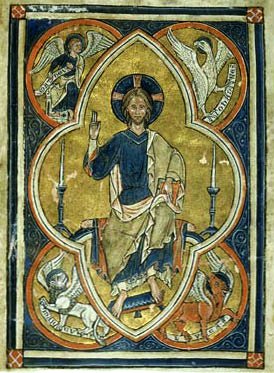 "There are four gospels and only four, neither more nor less: four like the points of the compass, four like the chief directions of the wind. The Church, spread all over the world, has in the gospels four pillars and four winds blowing wherever people live. These four gospels are in actual fact one single Gospel, a fourfold Gospel inspired by the one Spirit, a Gospel which has four aspects representing the work of the Son of God. These aspects are like the four cherubs described by Ezekiel. In the prophet's words: `The first had the like ness of a lion,' symbolizing the masterly and kingly role of Christ in priesthood; `the second had the appearance of an ox,' the beast of sacrifice, recalling the perfect sacrifice of Christ; `the third had the face of a man,' undoubtedly referring to the coming of the Lord in human nature; `and the fourth had the aspect of a flying eagle,' with a clear allusion to the grace of the Spirit hovering over the Church. [cf. Ezek. 1:10; Rev. 4:7] The four Gospels correspond to these symbols. Christ is at the center of them. John actually speaks of his kingly and glorious Sonship to the Father in his opening words: `In the beginning was the Word.' [John 1:1] Luke begins with Zaccharias offering sacrifice. Matthew chooses first of all the Lord's human genealogy. And Mark leads off by calling on the prophetic Spirit which invests humanity from on high."
"There are four gospels and only four, neither more nor less: four like the points of the compass, four like the chief directions of the wind. The Church, spread all over the world, has in the gospels four pillars and four winds blowing wherever people live. These four gospels are in actual fact one single Gospel, a fourfold Gospel inspired by the one Spirit, a Gospel which has four aspects representing the work of the Son of God. These aspects are like the four cherubs described by Ezekiel. In the prophet's words: `The first had the like ness of a lion,' symbolizing the masterly and kingly role of Christ in priesthood; `the second had the appearance of an ox,' the beast of sacrifice, recalling the perfect sacrifice of Christ; `the third had the face of a man,' undoubtedly referring to the coming of the Lord in human nature; `and the fourth had the aspect of a flying eagle,' with a clear allusion to the grace of the Spirit hovering over the Church. [cf. Ezek. 1:10; Rev. 4:7] The four Gospels correspond to these symbols. Christ is at the center of them. John actually speaks of his kingly and glorious Sonship to the Father in his opening words: `In the beginning was the Word.' [John 1:1] Luke begins with Zaccharias offering sacrifice. Matthew chooses first of all the Lord's human genealogy. And Mark leads off by calling on the prophetic Spirit which invests humanity from on high."
Then in art we can see many examples of painting of Christ in Majesty from Eastern and Western traditions portraying this. Furthermore, as I have mentioned before, here, the quincunx, used in many decorative patterns in Churches, particularly on Church floors always strikes me as a geometric portrayal of this. The quincunx is a pattern that comes originally from the Romans and was brought into the Christian culture.
Last week I wrote about the importance of praying the Liturgy of the Hours in forming the minds of children. I cannot overemphasise how much the liturgy teaches directly as well as nourishes spiritually. On any given day the scriptural passages are selected that have common themes and so parallels between, for example, old and new testaments that would be lost if I was only attending Mass. These are often emphasised further by the choice of passage from the Fathers in the Office of Readings. In regard to this particular instance, imagine how much of an impression it would make on any impressionable mind to hear this passage read and then as part of their art lesson for that day to hear the other references to it, then to asked both to copy an illumination of the scene from a traditional psalter and to construct with just straight edge and a pair of compasses the quincunx. This I suggest would connect forever in their minds the liturgy, the cosmos, the four Evangelists and their gospels, and the culture.
Images from top: Psalter of St Louis and Blanche of Castille, 13th century; Peterborough Abbey Psalter, 13th century; the De Lisle Psalter, 14th century; the final three photos are of Trinity Chapel in Canterbury Cathedral. The floor design date is uncertain, but possibly 12th or 13th century.
The Quincunx - a Geometric Representation of Christ in Majesty
 One of my hopes for the cultural renewal is the revival of a Christian form of geometric patterned art. With this in mind I have done my best to study past work, and try to discern the principles that underlie its creation. I wrote about resources that help in this respect in a previous article, here.
If tasked with the design of an ornate sanctuary floor now, for example, how might one go about it?
One approach, which was used by the Cosmati craftsmen of the middle ages was to have a large design for to fill the whole shape and then to infill with a variety of different geometric patterns. The Cosmatesque style is named after the Cosmati family which, over several generations, developed this distinctive style of work. If they were covering a large area, such as a whole church floor, they worked on three scales. For the grand form they tended to compartmentalize into rectilinear shapes. Then the sub-form would be a geometric design consisting of faceted polygons or interconnected circles. The final stage would be an infill of with very small repeated regular geometric shapes such as squares, triangles of hexagons (which are the three forms that can put together without creating gaps).
One of my hopes for the cultural renewal is the revival of a Christian form of geometric patterned art. With this in mind I have done my best to study past work, and try to discern the principles that underlie its creation. I wrote about resources that help in this respect in a previous article, here.
If tasked with the design of an ornate sanctuary floor now, for example, how might one go about it?
One approach, which was used by the Cosmati craftsmen of the middle ages was to have a large design for to fill the whole shape and then to infill with a variety of different geometric patterns. The Cosmatesque style is named after the Cosmati family which, over several generations, developed this distinctive style of work. If they were covering a large area, such as a whole church floor, they worked on three scales. For the grand form they tended to compartmentalize into rectilinear shapes. Then the sub-form would be a geometric design consisting of faceted polygons or interconnected circles. The final stage would be an infill of with very small repeated regular geometric shapes such as squares, triangles of hexagons (which are the three forms that can put together without creating gaps).
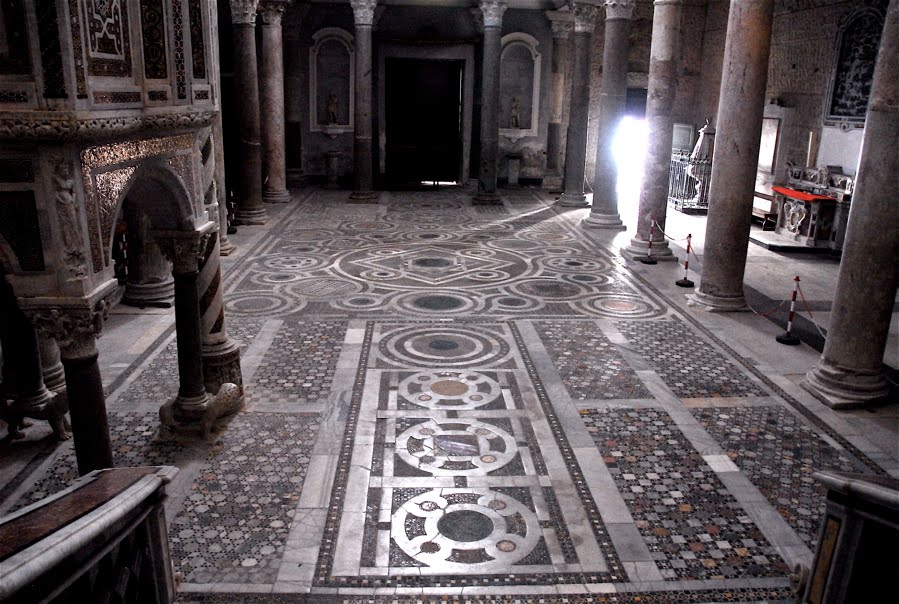
Cathedral of Sessa Aurunca, 13th century
One of the sub-forms is called the ‘quincunx’. This the generic name for the arrangement of five equivalent shapes that has four arranged symmetrically around the fifth which is centrally place (it is also a game-winning word in Scrabble so it'll pay to remember this, if for no other reason). The five dots on dice, for example, are in a quincunx shape. I understand the name comes from the Latin for five-twelfths, a coin of this fraction value of the currency had this name and often had this arrangement of dots on it.
In the context of geometric patterned art, it is the shape of four smaller circles spinning of larger secondary one was not limited to the Cosmati craftsmen. It is seen in both Eastern and Western Churches and across many centuries. I am going to setting my class at Thomas More College the task of designing and drawing a sanctuary floor based upon this design later this term.
In some respects the quincunx can be thought of as the geometrical equivalent of the traditional image of Christ in Majesty. Around the central image of the enthroned Christ we see four figures representing the four evangelists carrying the Word to the four corners of the world. One of the reasons that the Church settled on four gospels was to emphasis this symbolism (see St Irenaeus writing in the 2nd century AD in Against Heresies). The quincunx also symbolizes Creation, as the number four represents the cosmos. The symbolism is of, again the four corners of the world - Christ spoke of the 'four winds'; and the four ‘elements’ of the ancients from which all matter is comprised. These elements are fire, water, earth and air. In modern science the work element has come to mean something more specific than this. However, this does not invalidate this symbolism, to my mind, for they still symbolise very well, I feel the phases or states by which modern science categorises matter – solid, liquid, gas and energy (or alternatively plasma).
In his book on the Westminster pavement, which is the one example of Cosmati work in England, Richard Foster suggests that the inscriptions indicate that rather that signifying Creation, the quincunx signifies the final end. That is, rather than emanating from God, all is returning to God.
An 8th century German manuscript showing Christ in Majesty
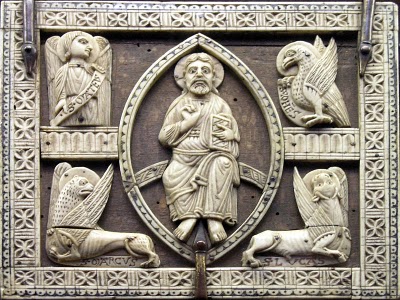
A 13th century French ivory carving, in the Musee de Cluny
A sub-form of interconnected circles other than a quincunx, at S Maria in Trastever, Rome





